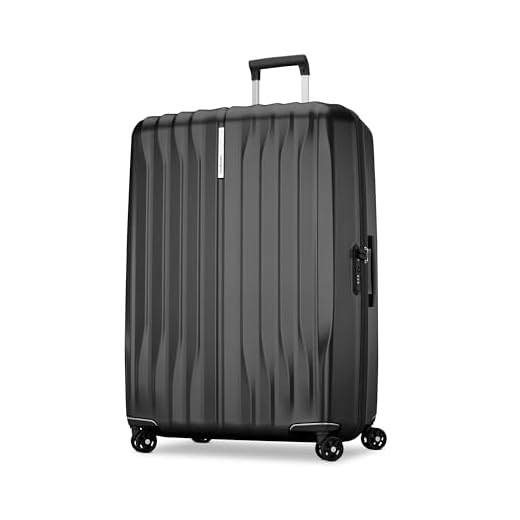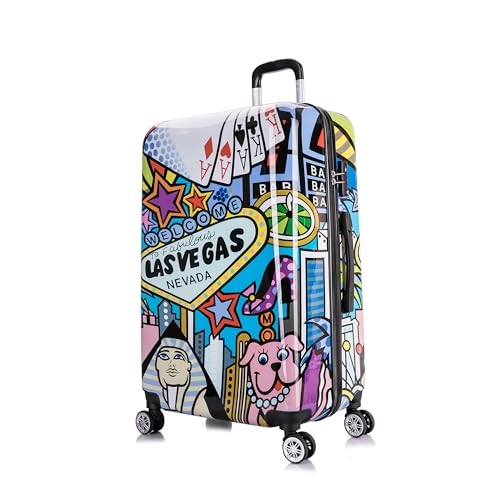



The maximum dimensions for a checked bag typically align with 62 linear inches (157 cm), which is the combined total of length, width, and height. Airlines may impose specific weight restrictions, often capping at 50 pounds (23 kg) for standard checked items.
For oversized pieces, many carriers accept items measuring up to 80 linear inches (203 cm), though fees may apply. Weighing up to 70 pounds (32 kg) is often permitted, with surcharges likely. Before traveling, always confirm specific regulations with the airline since policies can vary significantly.
Special items, such as sporting equipment or musical instruments, might have different handling rules. Planning ahead and verifying these details ensures a smoother check-in experience.
Airline-specific luggage size limits
Delta Air Lines permits a maximum dimension of 62 linear inches (157 cm) for checked items. United Airlines follows the same guideline, allowing checked bags up to 62 inches (157 cm) cumulatively for length, width, and height.
American Airlines has a similar policy, also capping checked baggage dimensions at 62 inches (157 cm). Southwest Airlines expands its limits slightly by permitting bags of up to 50 pounds (23 kg) and dimensions of 62 inches.
Additional Limitations
Low-cost carriers, like Spirit and Frontier, impose stricter limits on both size and weight. Spirit Airlines allows checked bags weighing up to 40 pounds (18 kg) with dimensions not exceeding 62 inches (157 cm), while Frontier mandates a maximum bag weight of 50 pounds (23 kg) and same dimensional limits.
Pricing Implications
Exceeding these specified dimensions can lead to significant fees. For instance, checked items that exceed weight limits may incur additional charges ranging from $50 to $200, depending on the airline. Planning ahead is crucial to avoid unexpected costs. Check best luggage deals black fridahy for options that meet these requirements efficiently.
Weight Restrictions for Checked Bags
Most airlines impose a weight limit of 50 pounds (23 kilograms) for checked items. Exceeding this allowance typically incurs additional fees that can range from $50 to $200, depending on the carrier and route.
Consider the following guidelines when preparing your belongings:
- Verify specific airline regulations, as some may allow up to 70 pounds (32 kilograms) for particular classes or destinations.
- Weigh your bag at home with a reliable scale to avoid surprises at the airport.
- Distribute weight evenly; packed items that are heavily loaded on one side may cause issues during transportation.
- Use packing techniques, such as rolling clothes, to maximize space and potentially reduce weight.
Pay attention to combination restrictions. If a traveler has multiple pieces of checked cargo, the total weight often cannot exceed 100 pounds (45 kilograms) across all items. This is particularly relevant for passengers managing multiple suitcases.
Some firms offer “heavy bag” options, allowing for higher limits, usually at an added cost. Check during booking for available services that suit your travel needs.
Certain international flights may also enforce stricter standards, based on regional regulations. Prior research can help mitigate inconveniences at the airport.
International vs. Domestic Luggage Policies
For travelers, recognizing distinctions in baggage regulations for international and domestic flights is essential. In general, international carriers tend to impose stricter weight restrictions than their domestic counterparts. Many international airlines limit the checked suitcase weight to 23 kg (50 lbs) for economy class, while domestic airlines often allow up to 30 kg (66 lbs) within the same class. Furthermore, dimensions may also vary, with international policies frequently allowing slightly smaller sizes due to space constraints in aircraft.
Customs regulations also affect what can be transported internationally. Certain items that could be easily packed domestically might face restrictions or additional fees abroad. It’s advisable to check specific airline rules prior to travel. For seamless packing, consider choosing a durable option, like the best luggage without zippers, which simplifies security checks and reduces the risk of spillage.
Additionally, consider how differing destinations impact luggage fees. Complicated fees can arise for traveling between countries within the same airline alliance, particularly if connecting flights are involved. Monitoring your carrier’s specific web page can help clarify any overlapping policies when booking tickets.
Extra-large Options and Fees
Airlines typically allow items exceeding standard dimensions but often impose additional charges. Common dimensions for oversized bags can reach 70-80 cm (length) or more, depending on the carrier’s policy.
Fees Overview
Charges for extra-large items usually range from $50 to $400, based on weight and destination. Some airlines implement tiered pricing, increasing costs for bags over specific thresholds. Here is a general fee structure:
| Weight Category | Typical Fee ($) |
|---|---|
| Up to 23 kg | 50-100 |
| 23 kg – 32 kg | 100-200 |
| Over 32 kg | 200-400 |
Airlines and Policies
Many carriers provide specific guidance regarding size and associated fees. For travelers planning to bring oversized items, checking individual airline rules for precise dimensions and charges is advisable.
Tips for Measuring Your Luggage Correctly
To ensure conformity with airline regulations, utilize a flexible measuring tape. Start by measuring height, width, and depth, adding the three dimensions together for the total size. Always measure from the outermost points, including wheels and handles, to prevent surprises at check-in.
Consider using a luggage size guide specific to your airline, as dimensions may vary among carriers. Additionally, check dimensions without any additional items inside, as packed bags can exceed limits.
Inquire about allowances for personal items. Sometimes, smaller bags may be included alongside checked pieces without extra fees.
Mark your bag with a clear identifier, reflecting size and weight limits. This can assist staff when removing oversized items from the conveyor belt.
If planning a trip with excess weight, researching services that allow for home pickup can inform better packing strategies. For tips related to creating a comfortable environment for pets while traveling, check out the best ac unit for dog house.
Common mistakes when checking in oversized luggage
Misunderstanding airline policies is a frequent error. Always check specific guidelines regarding dimensions and weight before arriving at the airport. A quick visit to the airline’s website can save time and avoid penalties.
Failure to measure items accurately leads to oversights. Use a tape measure, considering all protrusions such as wheels and handles. Double-check measurements to ensure compliance with airline regulations.
- Neglecting to weigh baggage can result in unexpected fees. Utilize a reliable scale prior to departure to ensure weight is within limits.
- Assuming all airports have similar policies can create issues. Regulations differ not only globally but also between domestic and international flights.
- Overpacking oversized items is a common mistake, often leading to extra charges. Plan what is necessary and avoid unnecessary additions to save on fees.
- Not preparing for security checks can lead to delays. Ensure all items can be easily accessed and comply with security regulations to facilitate a smooth process.
Disregarding additional fees for oversized or excess pieces can inflate travel costs. Always inquire about potential charges for larger items and factor these into your budgeting.
Lastly, underestimating the time necessary for checking in oversize items can cause panic. Arrive at the airport early to handle any unforeseen issues that may arise during check-in.








